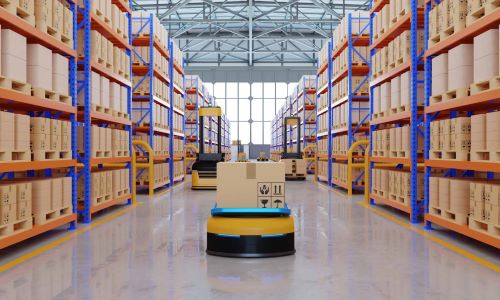The Future of Warehousing: Embracing Automation Technology
 By
By
The logistics and warehousing sector has always been at the forefront of innovation, driven by the need to improve efficiency, reduce costs, and meet growing consumer demands. In recent years, warehouse automation technology has emerged as a game-changer, revolutionizing how goods are stored, managed, and distributed. This article explores the various aspects of warehouse automation technology, examining its benefits, different types, and the impact on the industry. As e-commerce and global supply chains expand, warehouses are under immense pressure to operate more efficiently. Warehouse automation technology has risen to the occasion, offering solutions that streamline operations, reduce errors, and optimize storage space. Automation is no longer a luxury but a necessity for businesses aiming to stay competitive in a rapidly evolving market. Warehouse automation encompasses a broad range of technologies, each designed to address specific needs. Some of the most common types include: Automated Storage and Retrieval Systems (AS/RS): These systems use robotic technology to move goods in and out of storage, reducing the need for manual labor and improving accuracy. Automated Guided Vehicles (AGVs): These vehicles navigate through the warehouse using predefined paths, transporting goods from one location to another with minimal human intervention. Conveyor Systems: Conveyors move products along a fixed path, reducing the need for manual handling and speeding up the movement of goods. Robotic Arms: Often used for picking and packing, robotic arms can handle repetitive tasks with precision and speed. Each type of automation offers unique benefits, and many warehouses employ a combination of these technologies to maximize efficiency. The adoption of warehouse automation technology brings a host of benefits, including: Increased Efficiency: Automation reduces the time required to complete tasks, allowing warehouses to process more orders in less time. Reduced Labor Costs: By automating repetitive tasks, warehouses can minimize their reliance on manual labor, leading to significant cost savings. Improved Accuracy: Automated systems are less prone to errors than manual processes, reducing the risk of mispicks and inventory discrepancies. Enhanced Safety: Automation reduces the risk of workplace accidents by minimizing human involvement in hazardous tasks. Optimized Space Utilization: Automated systems can store goods in a more compact and organized manner, maximizing warehouse space. These benefits contribute to a more efficient, cost-effective, and reliable warehouse operation. While warehouse automation technology offers numerous advantages, it also raises questions about its impact on the workforce. As automation reduces the need for manual labor, some fear job losses and workforce displacement. However, automation can also create new job opportunities, such as those related to system maintenance, programming, and supervision. To address these concerns, companies must invest in retraining and upskilling their employees, helping them transition to new roles within the automated warehouse. By doing so, businesses can ensure a smooth integration of automation technology while supporting their workforce. Implementing warehouse automation technology is not without its challenges. Companies must consider several factors before making the leap to automation, including: High Initial Costs: Automation systems can be expensive to implement, requiring significant upfront investment. Integration with Existing Systems: Automation must integrate seamlessly with a warehouse's current technology stack, which can be complex and time-consuming. Maintenance and Downtime: Automated systems require regular maintenance, and unexpected downtime can disrupt warehouse operations. Data Security: As warehouses become more automated and data-driven, the risk of cyberattacks increases, necessitating robust security measures. Despite these challenges, the long-term benefits of automation often outweigh the initial hurdles, making it a worthwhile investment for many businesses. The future of warehouse automation is promising, with ongoing advancements in technology driving further innovation. Emerging trends include: Artificial Intelligence (AI): AI-powered systems can analyze vast amounts of data, enabling predictive maintenance, demand forecasting, and optimized inventory management. Collaborative Robots (Cobots): Cobots are designed to work alongside human workers, enhancing efficiency without fully replacing manual labor. Advanced Sensors and IoT: The Internet of Things (IoT) and advanced sensors allow warehouses to collect real-time data, enabling better decision-making and process optimization. Augmented Reality (AR) and Virtual Reality (VR): These technologies can improve worker training and assist in complex warehouse operations. These trends will continue to shape the warehouse automation landscape, offering new opportunities for businesses to improve their operations and stay competitive in the market. Warehouse automation technology is transforming the logistics industry, providing companies with the tools they need to operate more efficiently and effectively. While challenges exist, the benefits of automation—such as increased efficiency, reduced labor costs, and improved accuracy—are undeniable. By embracing automation and investing in the future, businesses can gain a competitive edge in an ever-evolving market. To ensure a successful transition to automation, companies should focus on careful planning, integration, and employee training. By doing so, they can unlock the full potential of warehouse automation technology and position themselves for long-term success. For a firsthand look at cutting-edge warehouse automation, be sure to visit Modula warehouse automation technology. By visiting Modula, you'll gain valuable insights into how automation can revolutionize your operations.1. The Rise of Warehouse Automation
2. Types of Warehouse Automation
3. The Benefits of Automation in Warehousing
4. The Impact of Automation on the Workforce
5. Challenges and Considerations
6. The Future of Warehouse Automation
7. Conclusion: Embracing Automation for a Competitive Edge






